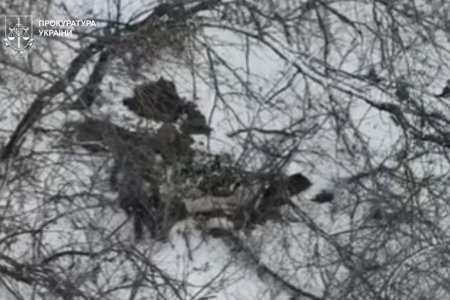
Since the outset of the full-scale invasion, Russian troops have not hesitated to strike Christian churches and other religious buildings across various regions of Ukraine. The situation in Donbas has significantly deteriorated this year. Some churches found themselves in active hostilities, particularly around Kurakhove and Pokrovsk. The advancement of the combat line toward densely populated areas has significantly raised the number of such attacks. However, in 2025, the occupiers also attacked religious buildings located a considerable distance from the front.
The city of Dobropillia: “A mistake is unlikely”
The Church of St. Ambrose of Optina of the UOC is located among the private households of Dobropillya, more than 20 kilometers from the front line. The church was attacked by drones early in the morning on May 6. Witnesses said there would have been many casualties if the UAVs had arrived an hour later. However, because of the early hour, only the local priest and the facilities manager were in the church building. They weren’t injured.
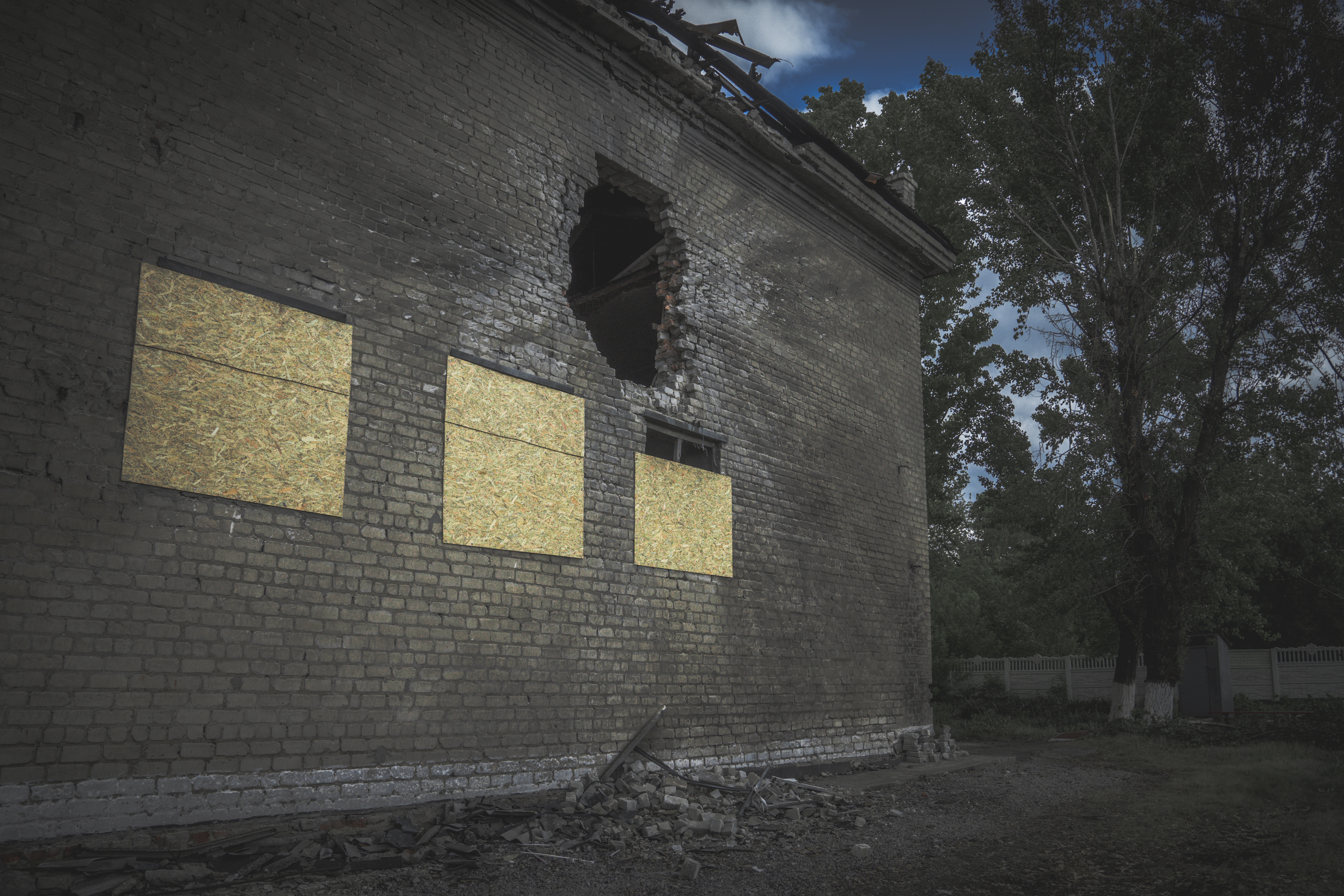
The church rector reported two explosions occurring roughly half an hour apart. This almost certainly disproves the notion that the explosions were caused by the falling parts of drones shot down by Ukrainian air defense. It is nearly impossible to shoot down two consecutive drones in a way that their falling fragments hit the same building.
The attack resulted in two large, gaping holes in the church’s facade. The explosion also caused significant damage to part of the roof, and a few hours later, heavy rain fell in Dobropillya. It additionally harmed the building, causing the church’s rector to fear a possible collapse of the roof, which was damaged by the explosion and flooded with water.
There are no windows, and the roof is damaged. We covered the windows and one of the holes ourselves, but the other was too high to reach. However, these are only temporary measures. The most critical problem is the damage to the roof. If it rains, the damage to the building will persist and worsen. It’s nice that it’s summer. If it were winter, it would be much worse,” said Vasyl, one of the church parishioners who volunteered to help address the aftermath of the attack.

Despite the extensive damage, the church still offers religious services. The church’s rector moved them from the most destroyed main hall to a small room. It is also known that, despite the attack, the rector conducted a service dedicated to Ukrainian fighters at the front less than a day after the explosions.

Toretsk: The church that survived the communists but not the new fascists
Photos of St. Macarius Church, built 119 years ago in Toretsk, appeared on the covers of numerous media outlets in the summer of 2024. At this time, the occupiers started assaulting our positions toward Toretsk. During the first days of the new attacks, the church faced intense shelling, and the entrances of nearby residential high-rise buildings were also entirely destroyed. I was the first to write about the fate of the church because I spent several days in Toretsk right after the occupiers’ offensive began. At that time, the church was already significantly damaged, and later, with hostilities shifting directly to the city, it became exceedingly difficult to ascertain its future.
In the spring of 2025, we discovered through drone reconnaissance that the church had been completely destroyed. Only the remains of the foundation were left. The aerial photos are being published for the first time.

This story is special because St. Macarius Church had been threatened with destruction at least twice before. The Communists shut down the largest church in the city in the 1930s. The dome was taken down, the bell tower was demolished, and the narthex was taken apart. The authorities planned to demolish the church building completely, but local parishioners and residents prevented this from occurring. They literally stood between the bulldozer and the church. Since these events happened in the early 1930s, before the implementation of the “Great Terror” policy, the regime could still make certain compromises: The destruction of the church was postponed. During World War II, the church endured bombing on two occasions: first during the Nazis’ capture of Toretsk and then during the Red Army’s liberation of Toretsk. The church miraculously did not sustain significant damage.
As of 2025, it is challenging to determine whether the church can be restored in the future. The city of Toretsk has been turned into a “lunar landscape” and is in total destruction. A significant portion of the city is already under occupation, and the enemy is gradually advancing.
Churches in Pokrovsk
Back in the summer of 2024, civilian life flourished in the city of Pokrovsk. Despite the enemy’s fairly quick advance, public transportation remained operational in the city center, and a lot of shops, cafes, and restaurants stayed open. Before the full-scale invasion, one could hardly notice the isolated destruction in a large city with a population of over 60,000. Everything changed in the fall of 2024. The enemy approached the outskirts of Pokrovsk and later, in January, began to bypass the city from its southern flank. All kinds of weapons, from artillery to high-powered guided aerial bombs, were employed to shell residential areas. In the spring of 2025, the number of UAVs striking the Pokrovsk gromada could reach several dozen daily. This statistic also includes strikes aimed directly at the city’s central area.
These attacks affected various objects: residential high-rise buildings, hospitals, schools, and kindergartens. While preparing this material, I discovered the destruction and damage done to many churches. The city’s main church, St. Michael the Archangel Church (also known as St. Michael’s Church in Pokrovsk), has been damaged multiple times. The most recent attack that damaged the church occurred on May 13. However, the central church building remains relatively intact.
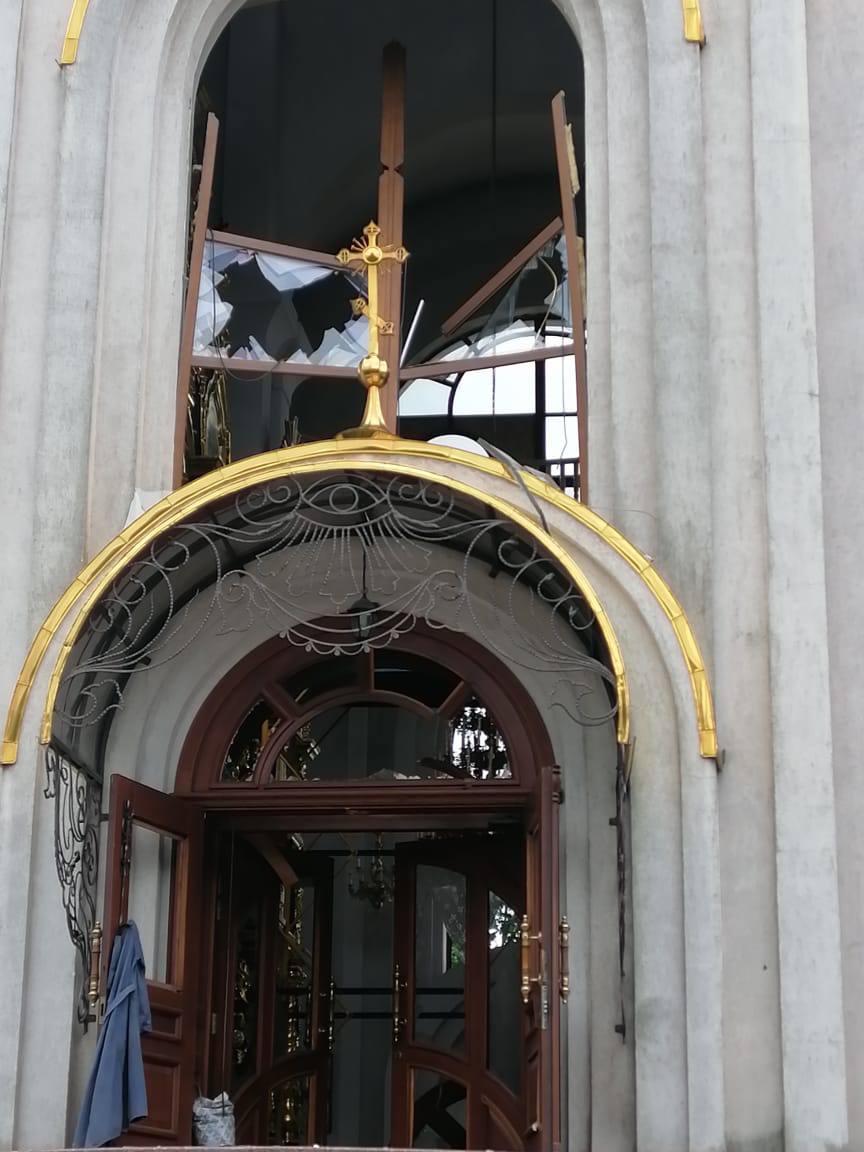
The main church and administration of the Pokrovsk vicariate, the Church in honor of the Holy Great Prince Vladimir, Equal of the Apostles, in the city of Pokrovsk, was left without a roof, suffered significant damage to the walls, and experienced several fires inside the building. The church has been in this condition since at least April 2025.

On March 29, 2025, the Church of St. John Chrysostom was utterly destroyed. It is difficult to even recognize from the photo that this mountain of debris and rubble was once a religious building.
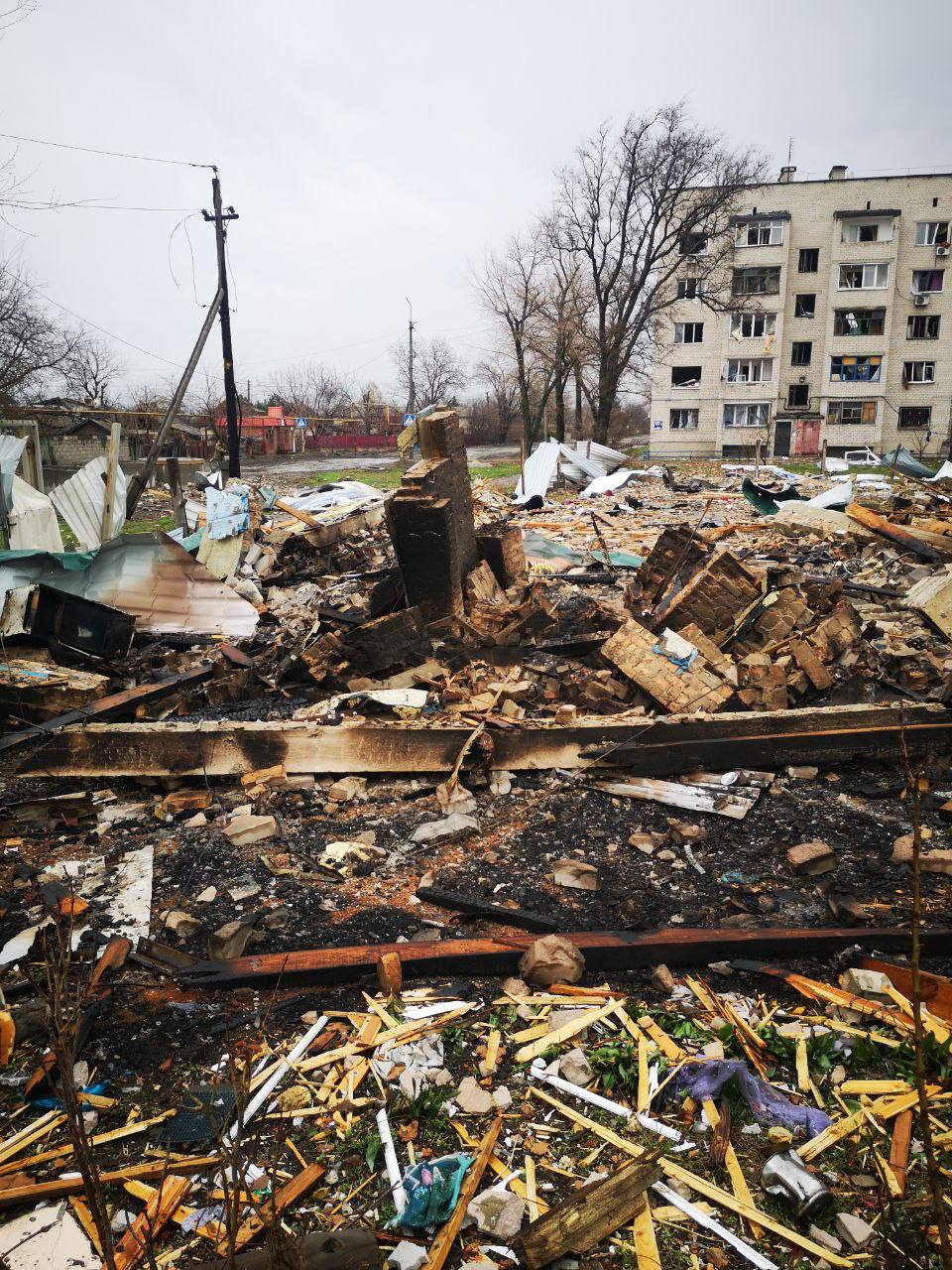
Given the ongoing hostilities, making an accurate assessment is nearly impossible at this time. Nevertheless, representatives from the Pokrovsk vicariate, who were interviewed for this piece, indicate that most, if not all, of the Christian churches in Pokrovsk have sustained some form of damage. Besides the cases already mentioned, there are reports of shelling and damage to the Church in honor of the Holy Great Prince Vladimir, Equal of the Apostles, the Church of St. Constantine and St. Helen in Pokrovsk, and St. Nicholas Church.
Religious buildings in the city of Myrnohrad and the village of Novoekonomichne sometimes referred to as “satellite cities” of Pokrovsk, are also consistently under attack. Specifically, we know that the Church of St. Demetrius and the chapel of the Iberian Icon of the Mother of God at the Stepove cemetery were damaged.
All these destructions are the result of this year’s attacks.
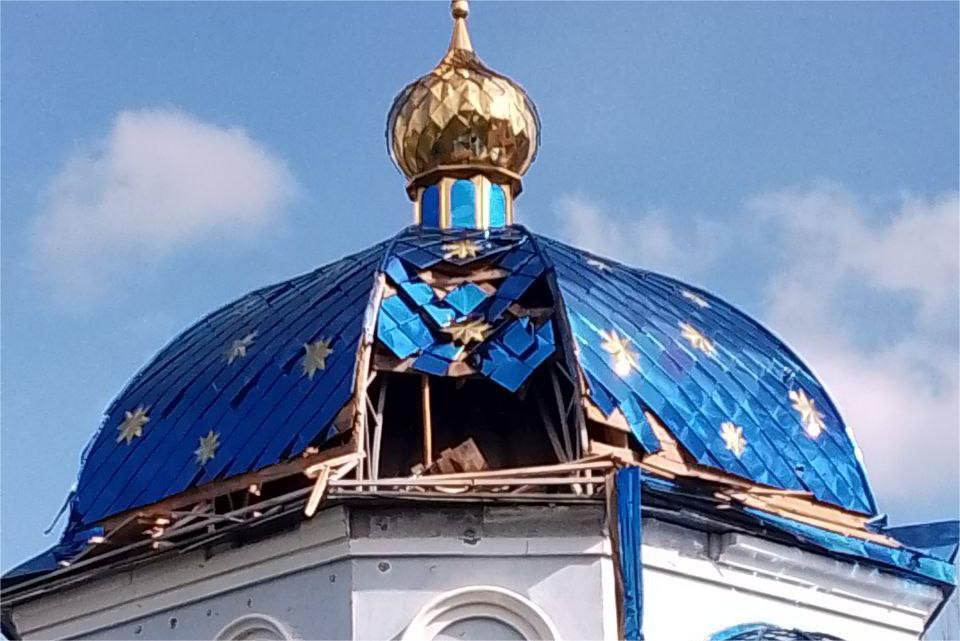
Konstantinovka: a new dark mark on the map
Konstantinovka is currently one of the largest and most important towns in the government-controlled area of Donetsk oblast. The enemy has been attempting to break through to the outskirts of Konstantinovka for months while targeting the city’s civilian infrastructure. We have recently published a separate article about the fate of Konstantinovka.
In recent weeks, the enemy has achieved some success and continues to advance toward Konstantinovka, which is confirmed, in particular, by OSINT projects’ data. Now, the distance from the front has decreased to 12 to 13 kilometers.
On the eve of Easter, during Lent, the enemy launched an attack on one of the city’s central churches, the Church of St. Prince Ihor of Chernihiv. The building suffered extensive damage; the roof was punctured, and several domes were destroyed.

Volunteers warn that the scenario of Pokrovsk and other large settlements in the Donetsk region is repeating itself in Konstantinovka. The enemy is slowly advancing, bringing its artillery into position. Powerful aerial bombs are already being regularly used in the city. For instance, on May 7, one smart bomb destroyed the entrance of a high-rise building. The State Emergency Service employees searched for individuals trapped under the rubble for over a day.
Simultaneously, the city is already facing significant problems with electricity, water supply, and communication. The loss of mobile and internet service may leave the remaining residents without assistance and facing a complicated evacuation procedure.
For more information about how people are rescued from enemy drones, check out an article on the final weeks of unoccupied Kurakhove.
Attacking churches constitutes a war crime
As of last fall, it was reported that more than 600 religious buildings in Ukraine had been destroyed or damaged due to Russian aggression. The examples provided in this article may suggest that this figure continues to grow over time.
Military attacks on religious sites, such as churches, are deemed war crimes under international humanitarian law. This is determined by general provisions for protecting civilian objects during military hostilities, along with specific provisions from relevant international documents.
Thus, Article 53 of Protocol I to the Geneva Conventions of 1977 prohibits:
- to commit any acts of hostility directed against the historic monuments, works of art, or places of worship;
- to use such objects in support of the military effort;
- to make such objects the object of reprisals.
According to Article 8(2)(b)(ix) of the Rome Statute of the International Criminal Court (ICC), it is a crime to “intentionally direct attacks against buildings dedicated to religion... provided they are not military objectives.” According to lawyers, in order to be liable under this article, the perpetrator must intentionally target a place of worship instead of being indifferent to the consequences of their attacks. Otherwise, we should discuss qualification under a different, more general article.
